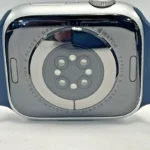Pac-Man emerged as an iconic character in the world of video games after his debut in 1980. Created by Toru Iwatani, a game designer from Japan, Pac-Man’s unique design and engaging gameplay captured the imaginations of players worldwide. As a bright yellow circle navigating mazes while eating dots and avoiding ghosts, Pac-Man quickly became a symbol of pop culture and a mascot for Namco, now Bandai Namco Entertainment.
Beyond just a simple character in an arcade game, Pac-Man’s influence extends into various forms of media and merchandise. From TV shows to clothing and beyond, this video game hero’s cultural impact underscores the lasting appeal of a character whose design is as straightforward as it is memorable. Consistently recognized for his place in digital entertainment history, Pac-Man remains a beloved figure in the global gaming community.
Key Takeaways
- Pac-Man is a classic video game character created by Toru Iwatani in 1980.
- The character functions as the official mascot for Bandai Namco Entertainment.
- His enduring popularity showcases significant cultural impact, extending into various media and merchandise.
Creation and Development
The iconic Pac-Man character was born from a simple slice of pizza and a desire to create a game that deviated from the norm. It stands today as a revolutionary design that changed how people interacted with video games.
Conceptual Inspiration
The idea for Pac-Man struck Toru Iwatani when he glanced at a pizza with a missing slice. The image spurred the concept for a character that would munch its way through a maze. Going against the grain of traditional shoot-’em-up games like Space Invaders, Iwatani wanted to craft a game that could appeal to a wider audience, including women.
Character Design and Name
Originally named Puck Man due to its puck-like shape, Pac-Man’s design is credited to Iwatani and his team, including the artist Toshio Kai. The character’s visual design reflected its eating mechanic, with a mouth that opens and closes. When the game made its way from Japan to an international audience, its name was changed to Pac-Man, to prevent vandalism of the original name.
Development by Namco and Iwatani
Developed by Namco, Pac-Man was designed to be an accessible and non-violent arcade game that stood out among the popular games of the time. Iwatani’s vision brought forth not only a new style of gameplay but also introduced characters with personality, which was epitomized by the colorful chasing ghosts. The game’s development, from its unique concept to the final artwork and mechanics, marked a significant shift in video game design.
Cultural Impact and Legacy
Pac-Man burst onto the scene and quickly gobbled up the hearts of arcade enthusiasts. Its influence spans decades, reshaping not only the gaming landscape but also becoming an emblematic figure in broader pop culture.
Influence in Gaming and Media
As an iconic creation of Namco, Pac-Man’s influence in gaming is immense. It introduced a character-centric model to arcade games, a stark shift from traditional high-score focus. This approach set a new standard, inspiring countless video games, including Nintendo‘s own superstar, Mario. The character of Pac-Man proved so appealing that it resulted in a wide range of media, from a Pac-Man cartoon to the famous anthem of the ’80s, “Pac-Man Fever”. The game’s reach into pop culture is further cemented by its inclusion in the multi-franchise video game crossover, Super Smash Bros.
- Video Game Franchise: Spanning an array of sequels, ports, and spin-offs like Pac-Man World.
- Representation of Women: It attracted a significant female audience to arcades, changing the perception that video games were mainly a male domain.
Reception and Contributions
Pac-Man charmed players worldwide, contributing significantly to the revenue of the gaming industry by consuming countless quarters. Its wide appeal and reception brought arcade games into mainstream pop culture, with fans spanning all genders and ages. The Pac-Man series further established Bandai Namco Entertainment as a dominant force in the video game market.
- Critical Acclaim: Lauded for its simple yet addictive gameplay.
- Cultural Icon: Pac-Man fever points to the substantial cultural and financial impact of the game.
Frequently Asked Questions
The Frequently Asked Questions section provides insights into the classic arcade hero, Pac-Man, shedding light on his creation, narrative, and the game’s prominent characters.
What are the original characters featured in the Pac-Man game?
The original Pac-Man game stars Pac-Man as the main character who munches pellets in a maze while avoiding four ghosts—Blinky, Pinky, Inky, and Clyde—who each have their unique behavior patterns and pursue Pac-Man throughout the game.
What is the storyline or backstory of the Pac-Man character?
Pac-Man’s backstory centers on his insatiable appetite. In the maze, he eats dots and power pellets to outsmart ghosts and clear levels. The Pac-Man story is simple, as the main focus was the gameplay when it debuted in arcades.
Can you detail Pac-Man’s personality traits and characteristics?
Pac-Man is portrayed as a cheerful and upbeat character, always hungry and on the move. His ability to eat ghosts after consuming power pellets shows his daring and boldness.
Who are the ghost characters in Pac-Man and what are their names?
The ghost characters in Pac-Man, known as the Ghost Gang, include Blinky, the red ghost, who leads the chase against Pac-Man; Pinky, the pink ghost, who tries to ambush Pac-Man; Inky, the blue ghost, known for his unpredictable movement; and Clyde, the orange ghost, who moves more randomly and seems less focused on chasing Pac-Man.
How has Pac-Man’s character developed since the 1980 release?
Since the original 1980 arcade release, Pac-Man has evolved from a basic 2D character into a 3D one, with a richer backstory in games like “Pac-Man and the Ghostly Adventures.” He now has a home, Pac-Land, and faces newer challenges and adventures.
What significant milestones has the Pac-Man franchise reached in its history?
The Pac-Man franchise marked its place as a pop culture icon with over 30 licensed sequels and spin-offs, touching various platforms and merchandise. Its influence reached into television and music, certifying Pac-Man as a household name since its inception.







